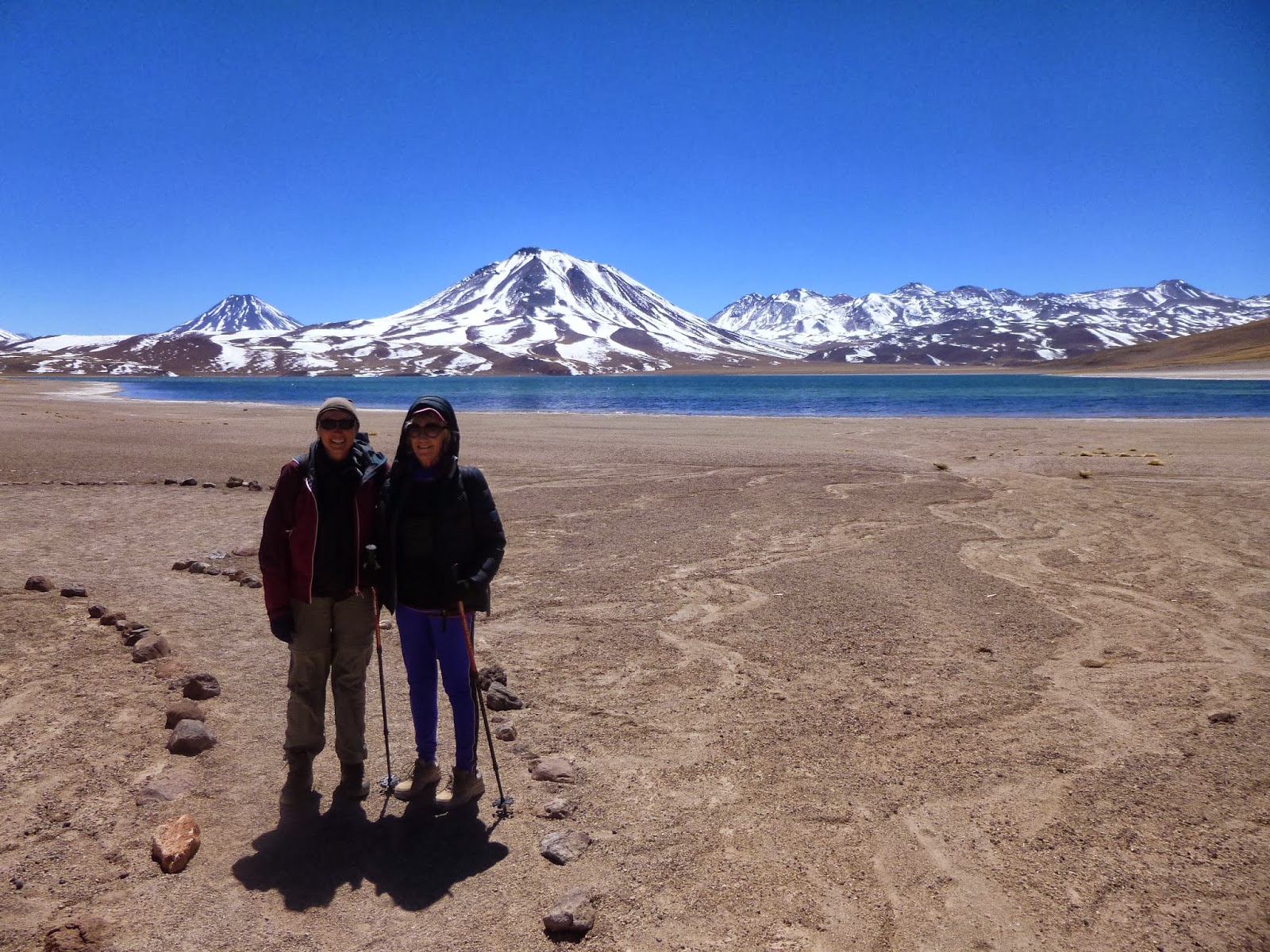Valle de la Luna (Moon Valley)
Formed from stone and sand which have been eroded by wind and water. It looks somewhat similar to the surface of the moon. The white colour is from the salt crystals.
Lake Chaxa. There are three types of Flamingos that live here all year round.
Sue and me at Laguna Miscanti, 4000 metres above sea level.
Our biggest challenge during our visit to the Atacama was dealing with the high altitude. It is hard work breathing at these elevations. We had mild altitude sickness which also upsets your stomach and affects your appetite. i think I have lost more weight here than in the whole nine weeks doing the bike ride. I have chewed and drunk a lot of cocoa leaves to help relieve the symptoms. The leaves don´t taste very nice but they are not too bad soaked in a hot cup of tea.
|














No comments:
Post a Comment